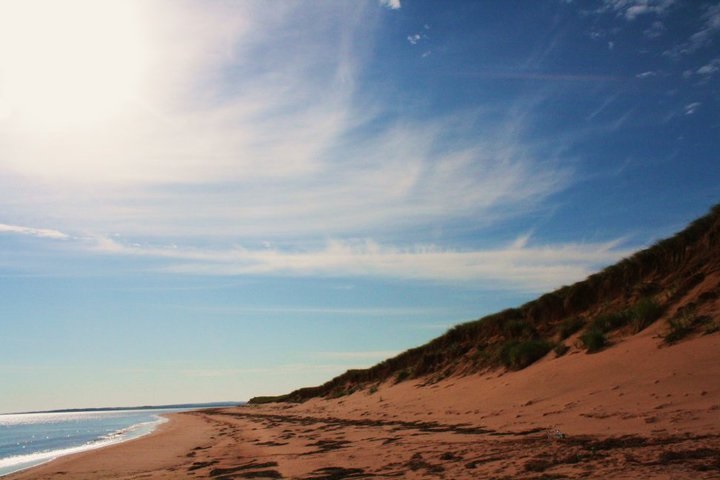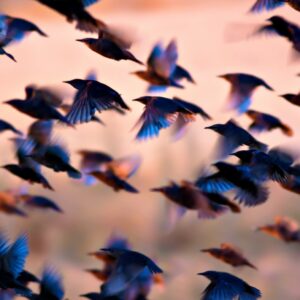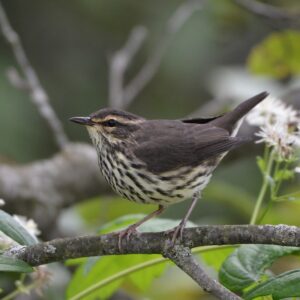Piping Plover
Life on an island can often be isolating, cut off from the mainland with only so many ways on and off. So, imagine how isolated an island off the coast of an island must be. You’ve just imagined Hog Island, a thin stretch of dune off the north shore of Prince Edward Island. Hog Island is one of the special places that the endangered piping plover, a small sparrow sized bird, calls home.
Growing up on Prince Edward Island, I spent most nights falling asleep to chirping crickets and the gurgling river in my backyard. The other nights, I would listen to a cassette tape about all of the endangered animals of the planet. It infuriated me, even at a young age, to know that some animals would be lost to the great halls of extinction. When I learned that the small piping plover, a cousin of the sandpiper that I saw so often in my backyard, was on the endangered list, I was determined to document it.
Working as a kayaking guide on Prince Edward Island, I spent most of my summers on the water and close to beaches. It was the perfect cover to start my search for the elusive piping plover. Each day while I would take out tourists from around the globe, I would paddle close to shore and scan the beaches for clues. After a while, the story of the piping plover became part of my spiel and I began to recruit my kayaking customers for the search. Plenty of times, people would shout out, convinced that they had spotted the elusive critter. More often than not, it was a sandpiper. Once, it turned out to be a rather large hermit crab.
It wasn’t until my little brother was preparing to head off to study zoology at the University of Guelph that a trip to Hog Island came up. For years, I had paddled along the pristine patch of sand but never with my brother. This year, he wanted to come along. Together, we prepared our gear for an overnight stay and drove our kayaks up to Malpeque Bay in western Prince Edward Island.
It was early morning when we pushed off from shore and began the paddle to Hog Island. The sun was high in the sky when we picked a spot to pull in. As I began to unpack our tent and food supplies, my brother ran off to explore. Soon, he started bellowing my name. I ran over to take a look at what he had found. There, pressed into the sand as delicately as a painter’s stroke, were tiny footprints which looked consistent with what I was searching for, the piping plover.
The next morning, my brother and I did something truly unexpected; we woke up before the sun. We clawed our way out of the small two man tent and onto the dew covered beach. Specks of sunlight were just starting to colour the sky. We grabbed our kayaks and paddled out onto the glassy water to practice our rolls. As the sun broke through the horizon, we were descended upon by thousands of double-breasted cormorants, out in search of breakfast. We watched as they flew, dived, fished and swam. Jealous of their seemingly unending breakfast, we headed to shore to boil up some oatmeal.
As we climbed out of our cockpits, we were caught dead in our tracks. Running towards us, huddled together like a football team, were a pack of piping plovers. The elusive, endangered creatures were out for a morning run, blissfully unaware of their precarious place in the battle for existence. The piping plovers are not responsible for the destruction of their habitat or the wellbeing of the tourism industry that brings millions to the beaches of Prince Edward Island. If we are judged by how we treat the weakest, most vulnerable of creatures, we certainly have a responsibility toward little creatures like the Piping Plover.
This article was contributed by guest blogger, Jesse Sharratt.
Jesse Sharratt is a photographer and travel writer who has shot protests in Tahrir Square and koala bears in Brisbane. He has lived in Egypt, Australia, France, Scotland and of course beautiful Canada, but no matter where he goes Prince Edward Island is always home.
You can connect with Jesse on Twitter, @JesseSharratt, and on Instagram @JesseSharratt. He also can be found on his website, jessesharratt.wordpress.com.






